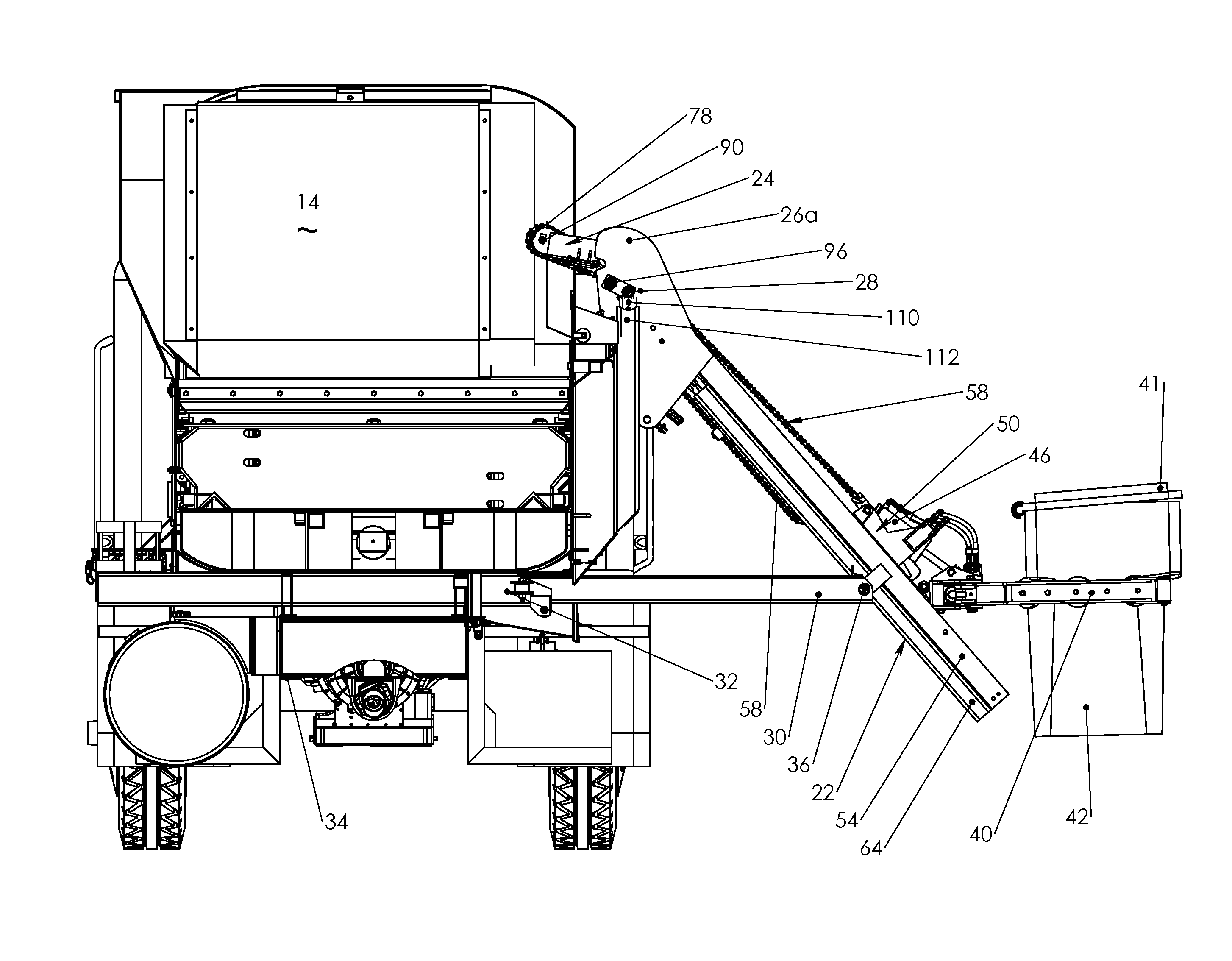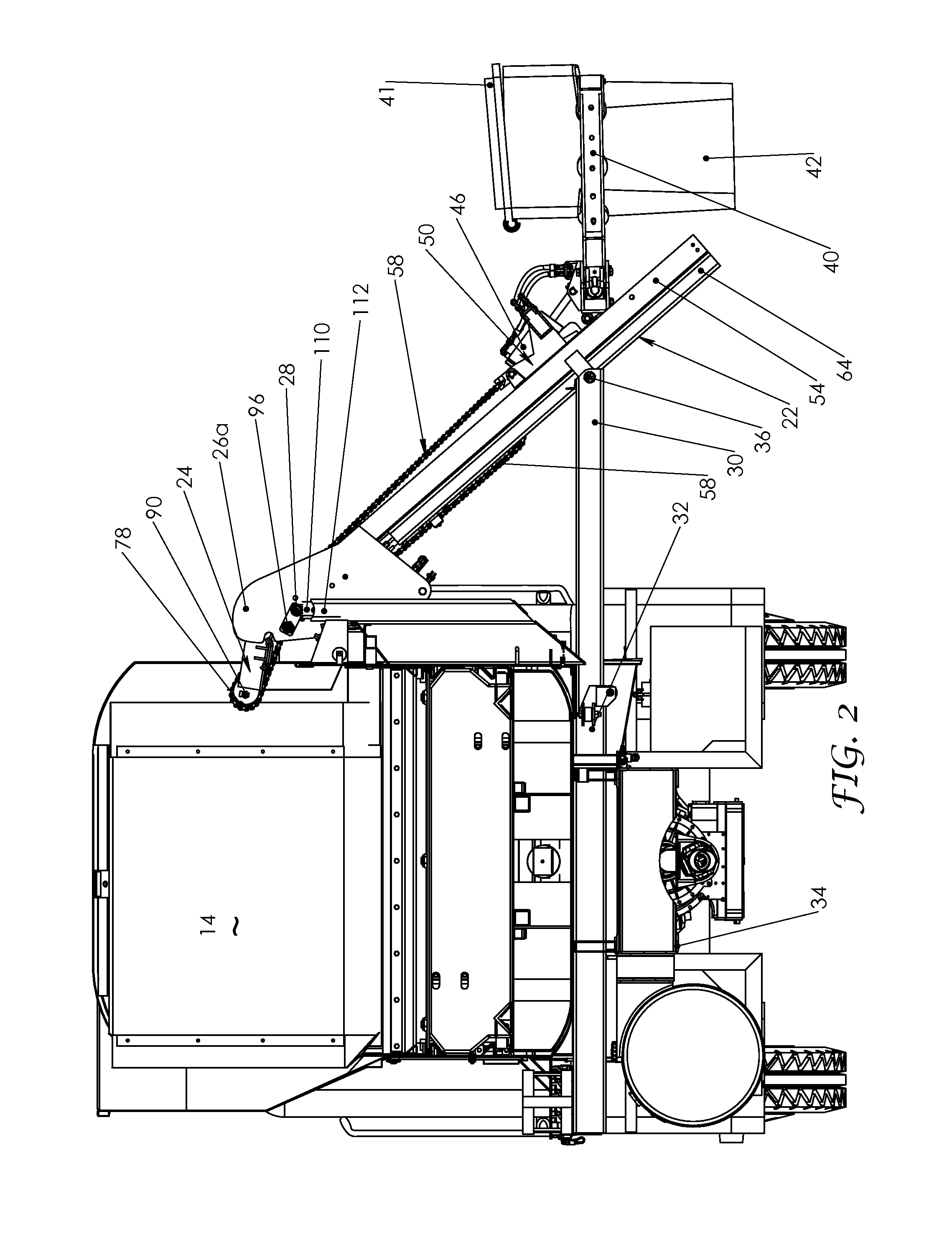Side loader arm for refuse collection vehicle
a technology for side loading and refuse, which is applied in the direction of refuse vehicles, transportation and packaging, etc., can solve the problems of inability to get as close to the container of refuse, inability to access narrow alleys, and inherent risks, so as to reduce the impact force, reduce the wear and misalignment of parts, and accelerate the cycle time
- Summary
- Abstract
- Description
- Claims
- Application Information
AI Technical Summary
Benefits of technology
Problems solved by technology
Method used
Image
Examples
Embodiment Construction
[0039]Referring to FIGS. 1-2, a side loader 10 is mounted to the side of refuse collection vehicle 12 which has a long hollow body 14 into which refuse is compacted as is known in the art. The front end of the body 14 has an upwardly opening hopper section 15 into which a refuse container is dumped. A cab 18 is at the front of the vehicle for steerage of the vehicle and operative control of the side loader 10, although additional or redundant controls may be placed on the side of the vehicle 12 adjacent the side loader. As used herein the relative terms above, below, upper, lower, top, bottom refer to the relative directions or positions along a vertical axis perpendicular to the ground surface on which the vehicle 10 rests. The lateral direction refers to a direction more parallel to the ground and relative to the vehicle 10. The relative directions front, back, forward and backward refer to the relative position or direction along longitudinal axis 21 of the vehicle 12 with front ...
PUM
 Login to View More
Login to View More Abstract
Description
Claims
Application Information
 Login to View More
Login to View More - R&D
- Intellectual Property
- Life Sciences
- Materials
- Tech Scout
- Unparalleled Data Quality
- Higher Quality Content
- 60% Fewer Hallucinations
Browse by: Latest US Patents, China's latest patents, Technical Efficacy Thesaurus, Application Domain, Technology Topic, Popular Technical Reports.
© 2025 PatSnap. All rights reserved.Legal|Privacy policy|Modern Slavery Act Transparency Statement|Sitemap|About US| Contact US: help@patsnap.com



